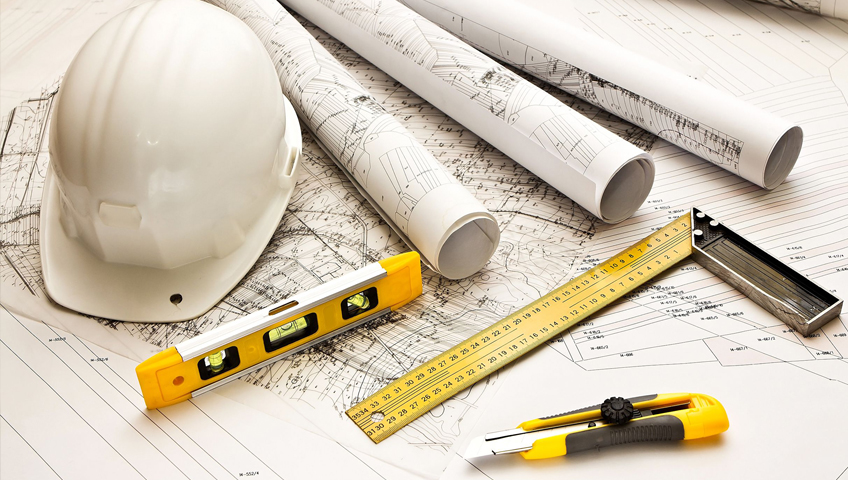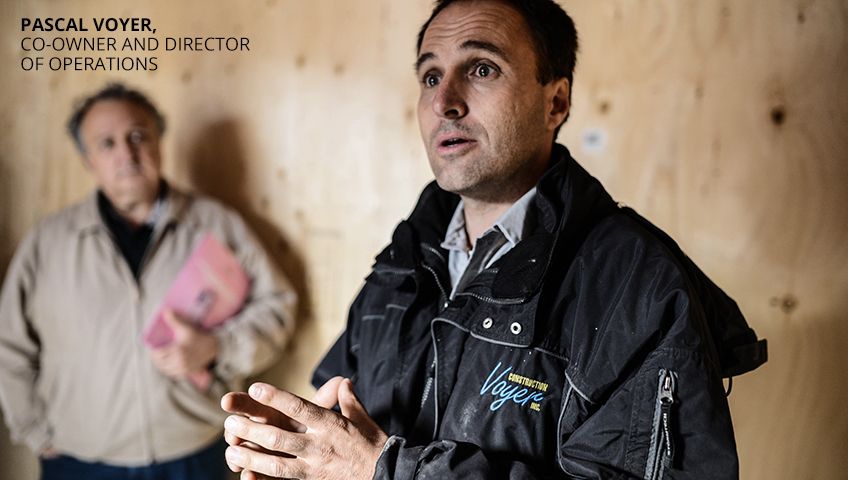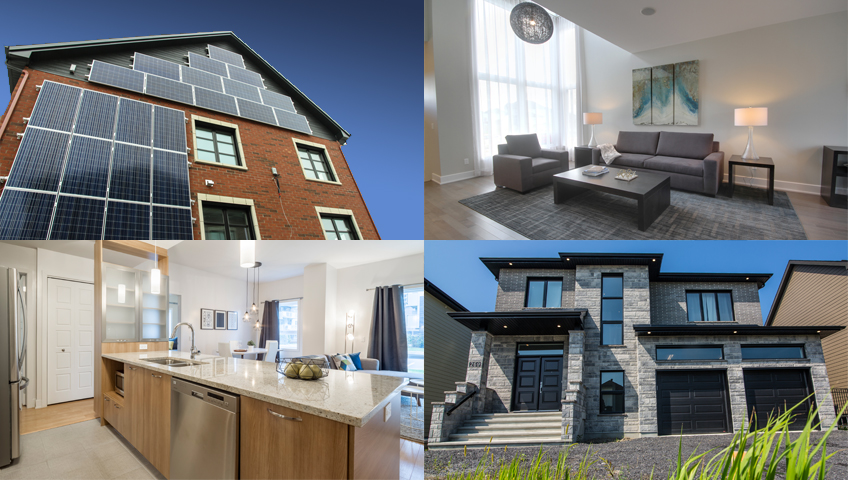
The Art of Building a Home
Because every detail makes a difference over the long term, Pascal Voyer unveils the necessary steps for planning and building a home. An overview.
Selecting a neighbourhood or real estate project, selecting a house model, preparing and submitting the project file to the city for a building permit, surveying, foundations, cladding, finishes, standards, guarantees… several challenges and questions arise when building a new home. Co-owner and Chief Operating Officer at Construction Voyer, Pascal summarizes the main steps to consider for a successful project.
1. Choice of neighbourhood and type of property
It all starts with the best of intentions. A life event, a neighbourhood, a real estate project, a model home that makes you dream. Then come the first steps: a meeting with a general contractor, or the purchase of land. During the first discussion with our client, we define the place where they want to build their future home and present our different models.
« In a specific real estate project, we always develop some fully customizable models along an architectural line that harmonizes well with the neighbourhood. In the case of new construction in an older area, we start with a model that we adapt to complement the surrounding buildings. Over the past few years, we have created more than 500 models to meet the needs of our clients, including cottages, bungalows and inter-generational homes. Customization is our greatest strength, » Pascal admits with pride.
2. Permit application and filing the dossier with the city
« The main challenge for do-it-yourself builders is to understand the application process for the PIIA (Site planning and architectural integration plans) in the city where they want to build. It has changed considerably in recent years. Now, urban planning committees authorize construction. They meet once a month to decide whether the home will integrate successfully into the neighbourhood. Then, the file must be endorsed by the city’s executive council, » he explains.
To avoid holdups and delays, Pascal recommends providing the plans, taking photos of neighbouring homes, and indicating architectural details, as well as materials that will be used for the exposed exterior surfaces. For example, if the home is near a park or a street corner, some cities will ask for embellishments to the sides of the property, to add windows, masonry, etc. The same applies to retaining walls, for which you must provide a description of the proposed work, as well as the chosen materials. You need to know!
3. Customization and finishes
After choosing a house model comes the long-awaited customization stage. A bigger kitchen, the addition of a walk-in, an enlargement on the side, more windows and light, high-end finishes, cabinets like this, paint like that, and so on.
« I remember when my father first started, I was very young when I saw the sheet of choices in his office. It was an 8-1/2 x 11 page, not even half full. Today, we have 17 pages in 8-1/2 x 14 format on which choices are written in very small print. These sheets provide a catalogue of photos for our representatives and a detailed list of questions to save time on the job site, so as not to forget anything. Clients can see all their options and choose according to their tastes: stove hood, faucets, parquet, moldings, brick, etc. When they want additional custom options, they meet with the plumber, the ceramic guy… We also advise them about the most durable materials and we offer equivalents. What matters the most to us is that our clients are completely satisfied, » he adds.
4. Start of construction
Upon receipt of the permit, work begins. The surveyor traces the plot of the house on the ground according to the final pan. Excavation begins, then the foundation. Pascal recommends installing drains with cleaning chimneys to avoid iron ochre buildup, a problem due to the composition of the land, sandy and close to the water table. Not all contractors install this type of drain. Just ask.
Over this system, geotextile membranes are installed, the stone is raised on the foundation, and the hole is backfilled. In the case of a house with a garage, what makes a big difference is compacting the sand in layers to reduce the creation of cracks, adds Pascal. And then the structure of the home is put in place and the windows, shingles, plumbing, insulation, electricity and wiring are installed. Finally, it’s the ‘dressing’ stage: gypsum, painting, interior finishes, cupboards, etc.
« We stand out a bit in this respect because everything is included with Voyer Quality. We even add bath mixers, hooks for safely clearing the roof of snow, regulatory flashings and many other details. We also made the decision to always meet our clients on construction sites. We tour them, we show them the work, where the money is invested, what has been done and what remains to be done. Clients love being involved. If there is a change to be made, we can correct it right away; we don’t have to undo or demolish, » says the contractor.
5. Delivery and guarantees
« After construction, a tour of the home is scheduled as a final visit before delivery. Point by point, everything is explained to the client: guarantees, items specific to their home, such as the operation of the electric or hot air furnace, air conditioning, air exchanger, small details of everyday life that people rarely think of, like pouring water down the drain to avoid smells in the garage, etc., » he says.
In Québec, new buildings constructed by general contractors are supervised by the
Régie du bâtiment du Québec (RBQ) and the GCR (Residential Construction Guarantee) guarantee plan. Moreover, one of the big benefits of programs like Novoclimat 2.0, is that properties are rigorously inspected by a government firm – an additional guarantee for the buyer that assures the construction of a home that is well-thought-out and designed to last over time, with a higher resale value.
« Since 2017, we have decided to automatically include the Novoclimat 2.0 and ComfortCertified* standards in the construction of our new homes. In addition to energy savings of 25% to 30% on electricity bills, our clients are assured that they live in a healthy environment, with superior quality and insulation, » explains Pascal.
6. After-sales service
Once papers are signed by the notary, the happy homeowners can finally move into their new home. The builder provides them with important numbers for after-sales service and acts as an intermediary with subcontractors in the event of breakage or other issues.
« People who purchase a self-build that is several years old have no guarantee or idea how it was built and most problems occur after thirty years. Prior to purchase, the hired inspector conducts a visual inspection only. He has no idea what is inside the walls and often there are small omissions. Adding the Novoclimat 2.0 and ComfortCertified standards to our buildings ensures that everything is inspected and corrected during construction and before delivery. We receive very few calls and the few times that we do, we act as a bridge between the various parties involved, » concludes Pascal, who also goes the distance of sending videos explaining how various installed devices work in the homes built by his team. A thoughtful gesture!
From the entire Voyer team,
happy future construction!
*Since March 2018, Construction Voyer does not offer the ComfortCertifiedTM program and no longer adheres to it in the construction of its new properties. Novoclimat 2.0 certification, Voyer Quality and the company’s 10-year warranty are still in effect.




